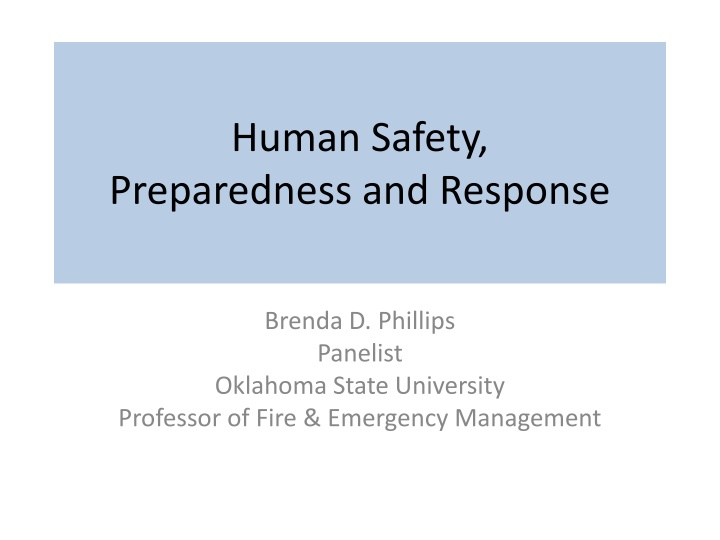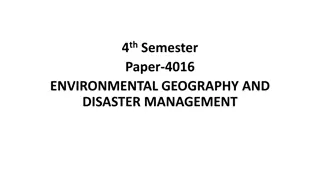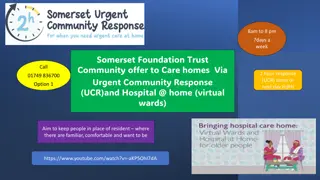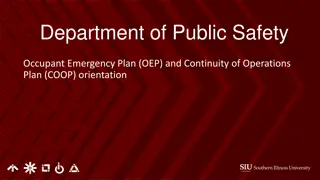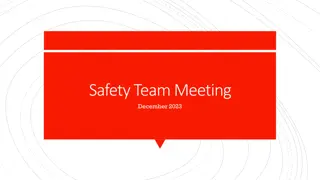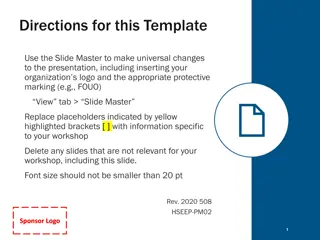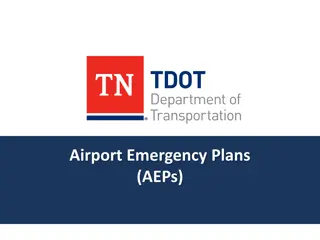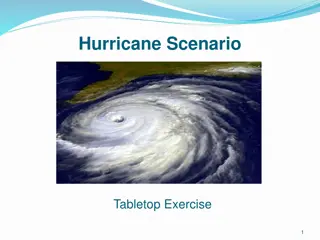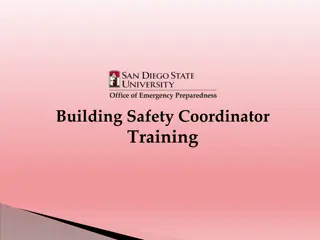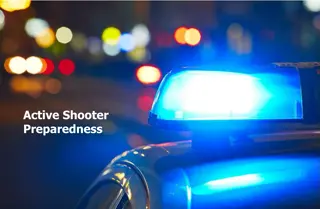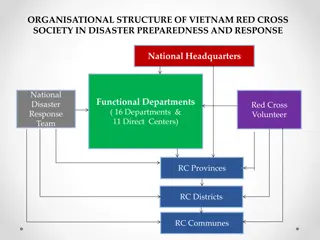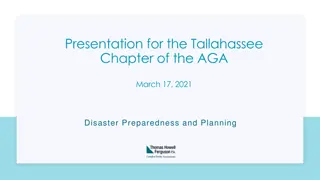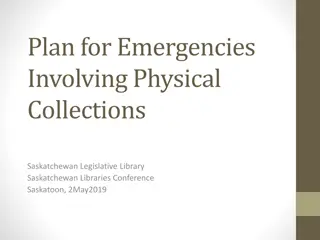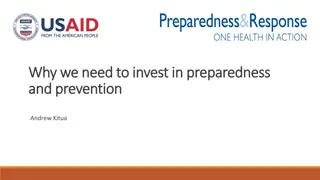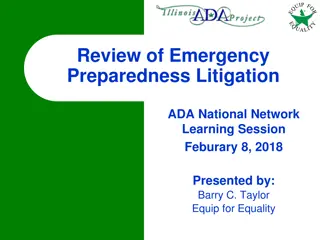Human Safety and Preparedness: Effective Response Strategies
Panelist Brenda D. Phillips from Oklahoma State University discusses hazard identification, risk analysis, and factors affecting household preparedness in emergency management. The importance of preparedness at individual, household, and organizational levels is emphasized, along with addressing barriers and building new strategies for improving readiness.
Download Presentation

Please find below an Image/Link to download the presentation.
The content on the website is provided AS IS for your information and personal use only. It may not be sold, licensed, or shared on other websites without obtaining consent from the author.If you encounter any issues during the download, it is possible that the publisher has removed the file from their server.
You are allowed to download the files provided on this website for personal or commercial use, subject to the condition that they are used lawfully. All files are the property of their respective owners.
The content on the website is provided AS IS for your information and personal use only. It may not be sold, licensed, or shared on other websites without obtaining consent from the author.
E N D
Presentation Transcript
Human Safety, Preparedness and Response Brenda D. Phillips Panelist Oklahoma State University Professor of Fire & Emergency Management
The Base for an Effective Response (in Phillips, Neal, Webb 2011; based on FEMA IS#1;Thomas et al. 2010). Hazard Identification Natural, Technological Terrorist Threats Past History New and Emerging Hazards Risk Analysis Location of Utilities, Infrastructure, Health Care facilities and other areas critical to community Areas of weakened structures that increase risk (dams, levees) People, Concentrated Populations, Vulnerable populations Economic analysis and ability to absorb hazard and rebound Environmental analysis of areas subject to negative impact in the ecosystem Develop preparedness campaigns to inform the public of risks and recommend risk reduction strategies. Train people on how to respond to area risks, initiate planning and conduct exercises and drills. Identify mitigation opportunities.
Hazard Identification Space Weather Not on the public radar Not on the EM radar The learning curve for new events Terrorism (attacks, anthrax, bio-threats) We just changed the warning system . Tsunamis
Risk Analysis Individual, household, family; congregate living centers Agency, organization Professional emergency management community Left, Hurricane Katrina, courtesy of Pam Jenkins and Barbara Davidson; above, FEMA News Photo
How important is preparedness? What do I put in my ready kit? Disasters are a low priority Household levels Organizations and agencies Even emergency managers are learning space weather Maybe it s the wrong question Who can prepare? What are the barriers? What can we build on to prepare? What do we need to do that is new ?
Factors Affecting Household Preparedness (In Phillips, Neal, Webb 2011; based on Tierney et al.2001) Previous Disaster Experience Hazard Awareness and Risk Perception Household Characteristics (e.g., presence of children)
Preparedness Cycle (Sources: Phillips, Neal and Webb, Introduction to Emergency Management ,Oct 2011; adapted from www.fema.gov/prepared) Is an all hazards approach still right? Who is qualified to evaluate our exercise? Preparedness Cycle Who should be involved in an exercise? What do I train for?
Will they respond? (Mileti 1999; Sorsen and Vogt Sorensen 2006; National Research Council 2010) Socially, geographically isolated; off the grid, congregate care, new mother Is it the geomagnetic storm I respond to or the blackout? Receiving the warning Understanding it Take action Language (ASL?); cognitive disability; the science of it Cost of short and long term response Action feasible? Is it credible? Who do I know that understands space weather? Are they talking about me? Personalize it Confirming
Effective Preparedness Campaigns Base it on what people know, on previous disasters, like blackouts, power outages User-friendly materials How are you going to map that? Projected geomagnetic storm path? Diversify the materials No new warning system Watches, Warnings Redundancy Involve people that people relate to: Heisman Award Winner Mark Ingram helps the Alabama EMA.
Space Weather in the context of daily life It s not something you see everyday. But, it certainly is cool. According to The Space Weather Prediction Center, a dramatic eruption, known as a Geomagnetic Storm, occurred earlier today on the sun that is expected to impact us earthlings by Wednesday beginning as early as the lunch time hour. The disturbance is hauling at a speed of 3.1 million mph . This means that there is a good chance that we could experience a small disruption in radio and radar as well as in magnetic compasses and the possibility of seeing the Northern Lights at much lower latitudes Either or, grab a blanket..cause this is gonna be cool. (OK, bad joke there). (KOCO TV, OKC,facebook page linked to weatherblog, June 7, 2011)
Points of Intervention Existing initiatives www.ready.gov Key partners Family, social networks, agencies, VOADs, CERTs Emergency managers Weather family People s daily lives Social media where s the facebook page? Blogs for specific user groups Events Grandparents day, Cinco de Mayo Grocery store recycle bags PSA s Spanish language stations; Schools Top, FEMA MOU with NVOADs; Bottom, Alabama post disaster meeting in a local church (FEMA/Tim Burkitt).
